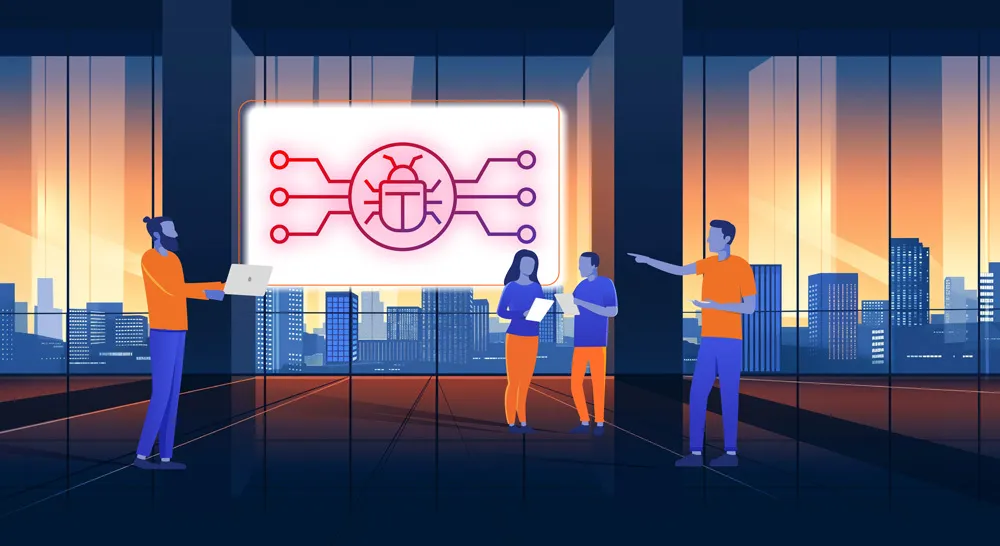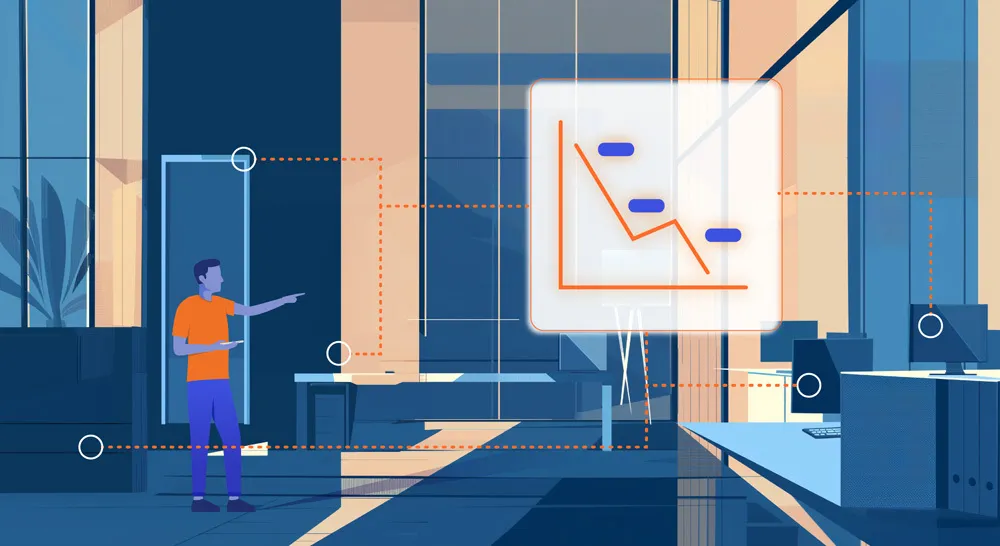
Understanding Ransomware Remediation: Navigating the Cyber Cycle
How Effective Remediation Fits Within Incident Response to Ensure Swift Recovery
In the ever-evolving landscape of cyber threats, ransomware attacks have emerged as a formidable challenge for businesses and individuals alike. These attacks are not isolated incidents but part of a broader cyber cycle that organizations must navigate continuously. Understanding how ransomware remediation fits into this cycle and how it really works is crucial for effective defense and recovery.
Ransomware remediation is more than just a reactive measure; it is an integral component of a comprehensive Incident Response (IR) strategy. By exploring the intricacies of ransomware remediation, we aim to shed light on the processes and best practices that ensure a swift and secure recovery from such disruptive attacks. This blog will guide you through the steps of ransomware remediation, illustrating how it works within the larger context of cyber incident response and the importance of preparedness, swift action, and professional support.
Understanding Ransomware
Ransomware is a type of malicious software that encrypts the victim’s files, rendering them inaccessible. The attacker then demands a ransom, usually in cryptocurrency, in exchange for the decryption key. Ransomware can spread through phishing emails, malicious downloads, or exploiting vulnerabilities in software. The two main types of ransomware are:
- Locker Ransomware: Locks the victim out of their device entirely, rendering it unusable until a ransom is paid.
- Crypto Ransomware: Encrypts critical files on the victim’s device, making them inaccessible without the decryption key.
The World of Ransomware
Ransomware is part of a broader cyber threat landscape and has evolved significantly over the years. Here’s how it fits within the world of cyber threats:
- Cybercriminal Enterprises: Ransomware is often deployed by organized cybercriminal groups that operate like businesses. These groups invest in developing sophisticated ransomware and employ various distribution methods to maximize their reach.
- Ransomware-as-a-Service (RaaS): Some cybercriminals offer ransomware for rent, allowing less-skilled hackers to launch attacks. This model has significantly lowered the barrier to entry for launching ransomware attacks, contributing to their proliferation.
- Targets and Impact: Ransomware can target any entity, from individuals and small businesses to large corporations and government institutions. The impact ranges from financial losses and operational downtime to reputational damage and legal consequences.
How Ransomware Fits Within the World of Incident Response (IR)
Incident Response (IR) is a structured approach to addressing and managing the aftermath of a security breach or cyberattack. The goal of IR is to handle the situation in a way that limits damage and reduces recovery time and costs. Ransomware remediation is a critical component of IR, fitting into the broader framework of responding to and mitigating cyber incidents.
- Prevention and Preparedness: Effective IR strategies start with prevention and preparedness. This involves implementing robust security measures, conducting regular risk assessments, and developing incident response plans that include specific protocols for ransomware attacks.
- Detection and Analysis: In the context of IR, detecting ransomware quickly is crucial. This involves monitoring systems for unusual activity, using advanced threat detection tools, and analyzing indicators of compromise (IOCs) to identify ransomware infections early.
- Containment and Eradication: Once a ransomware attack is detected, immediate steps are taken to contain the infection and prevent it from spreading. This is followed by eradicating the ransomware from affected systems, which is a core part of the IR process.
- Recovery and Restoration: Restoring affected systems and data is a critical phase in both ransomware remediation and IR. This involves using backups, decrypting data if possible, and ensuring systems are secure before bringing them back online.
- Post-Incident Activities: After the immediate threat is neutralized, IR involves conducting a thorough post-incident analysis to understand how the ransomware infiltrated the network. This information is used to improve defenses and prevent future attacks.
Threat Actors and Compliance
Understanding the nature of threat actors and ensuring compliance with regulatory requirements are critical components of effective ransomware remediation.
- Threat Actors: Ransomware attacks are often perpetrated by sophisticated cybercriminal organizations. These threat actors are constantly evolving their tactics to bypass security measures. Effective remediation requires a deep understanding of these threat actors and their methods.
- Compliance: Many industries are subject to stringent regulatory requirements regarding data security and breach notification. Ensuring compliance with these regulations is crucial during ransomware remediation. This involves timely reporting of breaches, maintaining detailed records of the incident, and adhering to industry-specific guidelines.
Steps in Ransomware Remediation
- Immediate Response and Containment
- Isolation: The first step is to isolate the infected systems to prevent the ransomware from spreading to other parts of the network. Disconnect affected devices from the network and disable wireless connectivity.
- Assessment: Quickly assess the extent of the infection. Identify which systems and data have been affected to prioritize remediation efforts.
- Investigation and Identification
- Identify the Ransomware: Determine the type of ransomware variant involved in the attack. This helps in understanding the behavior of the malware and finding potential decryption tools.
- Gather Evidence: Collect logs, network traffic data, and other relevant information to understand how the ransomware infiltrated the network. This information is crucial for preventing future attacks.
- Communication
- Notify Stakeholders: Inform relevant stakeholders, including management, IT teams, and possibly customers or partners, about the attack and the steps being taken to remediate it.
- Engage Legal and Compliance Teams: Ensure that legal and compliance teams are involved, as there may be regulatory requirements for reporting ransomware attacks.
- Eradication
- Remove the Ransomware: Use antivirus and anti-malware tools to remove the ransomware from the affected systems. This step ensures that the malware is completely eradicated and cannot re-infect the systems.
- Patch Vulnerabilities: Identify and patch any vulnerabilities that the ransomware exploited to gain access to the network. This includes updating software, applying security patches, and improving network defenses.
- Recovery
- Restore from Backups: If backups are available, restore the affected data and systems from clean backups. Ensure that the backups are not infected with ransomware.
- Decryption: In some cases, decryption tools may be available for certain ransomware variants. Use these tools to decrypt the affected files if possible.
- Reinforcement
- Improve Security Measures: Enhance security measures to prevent future attacks. This includes implementing advanced threat detection and response solutions, conducting regular security audits, and providing cybersecurity training to employees.
- Monitor for Residual Threats: Continuously monitor the network for any signs of residual threats or new attempts at ransomware infection.
The Role of Professionals in Ransomware Remediation
While the steps outlined above provide a general framework for ransomware remediation, the process can be complex and requires specialized expertise. Professional ransomware remediation services, such as those offered by CYPFER, can provide invaluable support in handling an attack. These experts bring experience in dealing with various ransomware variants and ensuring a comprehensive and swift recovery.
CYPFER: Your Partner in Ransomware Remediation
At CYPFER, we understand the urgency and complexity of ransomware attacks. Our team of seasoned experts is dedicated to providing immediate and effective ransomware remediation services. We offer:
- 24/7 Incident Response: Our team is available around the clock to respond to ransomware incidents promptly.
- Comprehensive Recovery: From eradication to recovery, we ensure that your systems are restored quickly and securely.
- Proactive Measures: We help strengthen your defenses to prevent future ransomware attacks, providing peace of mind and security.
- Global Reach: We operate globally, offering our services across North America, Europe, UK, Australia, and beyond. Our deep understanding of local and international regulations ensures compliance and effective remediation.
- No Outsourcing: At CYPFER, we handle all remediation work in-house. This ensures that our clients receive the highest level of service and security, with no delays or compromises.
Conclusion
Ransomware remediation is a critical process that requires prompt and strategic action. By understanding the steps involved and engaging with professional services, businesses can effectively mitigate the damage caused by ransomware attacks and ensure a swift recovery. CYPFER is here to support you every step of the way.
For more information on how CYPFER can assist with ransomware remediation, contact us today and let us help you achieve Cyber Certainty™.
Your Complete Cyber Security Partner:
Every Step, Every Threat.
At CYPFER, we don’t just protect your business—we become part of it.
As an extension of your team, our sole focus is on cyber security, ensuring your peace of mind. From incident response and ransomware recovery to digital forensics and cyber risk, we integrate seamlessly with your operations. We’re with you 24×7, ready to tackle threats head-on and prevent future ones.
Choose CYPFER, and experience unmatched dedication and expertise. Trust us to keep your business secure and resilient at every turn.

Get Cyber Certainty™ Today
We’re here to keep the heartbeat of your business running, safe from the threat of cyber attacks. Wherever and whatever your circumstances.
Contact CYPFER





